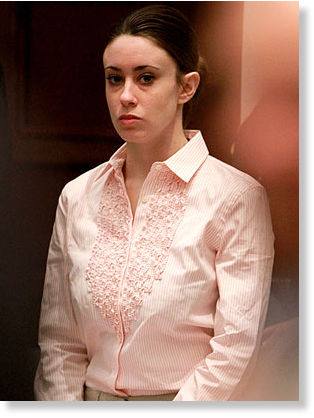
© Joe Burbank/Orlando Sentinel/MCT/GettyCasey Anthony
Casey Anthony's trial for the 2008 death of her 2-year-old daughter has roused discussion about the role of scientific evidence to prove beyond reasonable doubt that a person committed the crime he or she is accused of.
Regardless of Anthony's
acquittal for murder and public opinion on the verdict, the scientific evidence presented by prosecutors was portrayed as fallible by the defense.
The prosecution thought the evidence it brought forward was convincing:
DNA analysis of a strand of hair found in Anthony's car; results showing that chloroform and signs of decomposition could be measured in the car's trunk, where Anthony was accused of hiding and transporting her daughter's body; and Internet searches for incriminating terms such as "chloroform."
But in the courtroom, the scientific evidence was disputed and eventually fell flat in carrying the burden of proof for the defense and the jury.
Making things harder, the remains of Anthony's daughter Caylee were so decomposed, all that was left was bone by the time they were discovered by experts in late 2008. State labs had enough genetic information to identify the body, but no tissue samples or clues to determine the cause of death. There was too little biological material to work with.
Not knowing the young girl's cause of death placed a larger burden on the prosecution to piece together Anthony's actions. There was no DNA evidence that linked Anthony to any crime scene. What about fingerprints? None.
During the trial, the defense claimed that a hair sample in Anthony's car was still consistent with its story that Caylee accidentally drowned and Anthony and her father panicked and put the body in the car. A forensic expert said there was no evidence of a
sedative in the hair sample, even though hair isn't the best way to measure such things.
Scientists at the Oak Ridge National Laboratory used
chromatography techniques to separate and pinpoint which chemicals were present in a can gas sample gathered from Anthony's trunk. One expert who testified was "shocked" by the amount of chloroform and the stench of the sample, according to a
CNN article.
Later, his research methods, which were new and not well-known, led to the defense questioning the validity of the results and disregarding them as proof of premeditation on Anthony's part.
The defense repudiated the method, claiming it had not yet been used in trials. In a sense, the claim seems ironic, as Orange County courtrooms, where the Anthony trial took place, were also the first to use cutting-edge DNA in cases, according to a local
Orlando news source.
The defense also dissected claims that insects from Anthony's car trunk supported the prosecution's theory that the young girl was subdued and killed with chloroform and left decomposing in the car. After presenting the evidence, an entomologist on the stand was forced to admit that the insects could have been feeding on the
bag of trash placed in the trunk as well.
Internet searches for "chloroform" and "neck-breaking" could not be pinned on Anthony either. Instead, her mother Cindy Anthony claimed to have conducted the searches, but her story was inconsistent with that of her
employer, who claimed she was at work.
Though experts on both sides of the case did their best to present accurate findings, criticisms of data collection and methods ultimately got in the way of maintaining certainty over claims, leaving more questions than answers for the 12 jurors determining Anthony's guilt.
Reader Comments
to our Newsletter